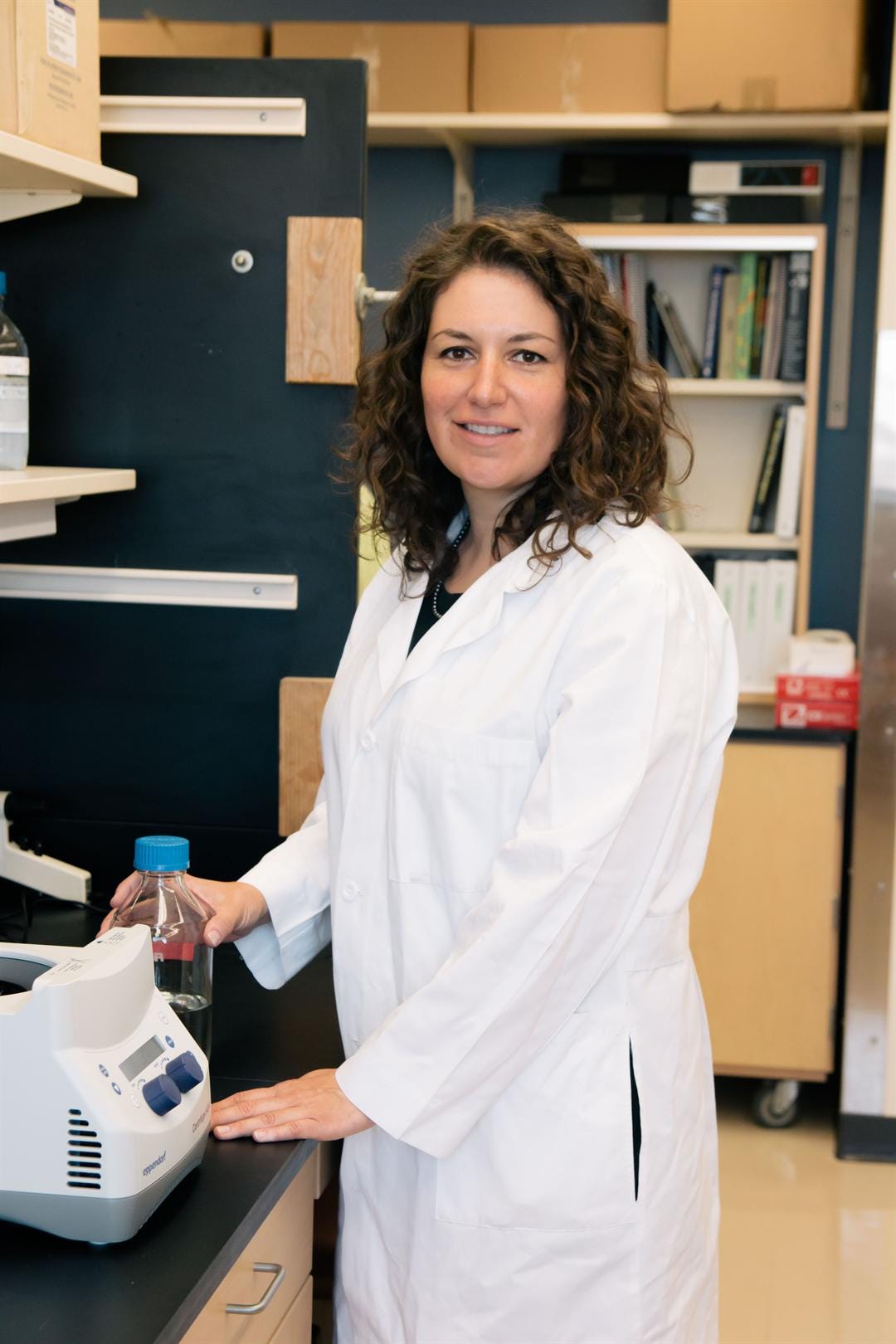Better Than Insulin: Scientist a Step Closer to Diabetes Cure
 Mastracci has a personal connection to the disease; her father has type 2 diabetes.
Mastracci has a personal connection to the disease; her father has type 2 diabetes.
Subscriber Benefit
As a subscriber you can listen to articles at work, in the car, or while you work out. Subscribe NowConstantly regulating blood sugar levels, frequent insulin injections and tracking diet are a challenge for adults with type 1 diabetes—imagine the burden for the 200,000 youth with the disease and their families. Sometimes referred to as “juvenile onset” diabetes, type 1 is often diagnosed in early childhood and requires lifelong insulin therapy. A researcher at the Indiana Biosciences Research Institute (IBRI) envisions a world where patients can experience freedom from insulin and believes a recent $750,000 grant will help translate her discovery into liberation.
While insulin is a reliable treatment for the 1.25 million Americans with type 1 diabetes, the Juvenile Diabetes Research Foundation (JDRF) says it doesn’t block the possibility of the disease’s devastating complications, such as heart attack, stroke, blindness, kidney disease and amputation.
“Insulin is a beautiful therapy and staves off what could be a fatal situation,” says IBRI Senior Scientist Dr. Teresa Mastracci. “But if you could fix the source of problem instead of just treat it, that would be freeing for anybody who suffers from the disease—especially when you’re thinking about children. Sometimes children at six months old are diagnosed with type 1 diabetes; that means parents are responsible to give that child insulin to make sure they can stabilize their blood glucose levels. It’s a huge burden on the family as a whole.”
That’s why Mastracci’s research takes aim at the source of the disease: beta cells in the pancreas that aren’t making insulin as they should. In the case of type 1 diabetes, the beta cells can’t function because the body is destroying them; Mastracci’s work focuses on regenerating these beta cells.
“If we could figure out a way to bring the beta cells back or to wake them up and make them start producing insulin again, this could potentially reverse the disease,” says Mastracci. “That’s the idea behind beta cell regeneration. This could, effectively, function as a cure for people with diabetes.”
Earlier in her research, Mastracci made a key discovery when she identified the genes that are likely responsible for causing the beta cells to regenerate in type 1 diabetes. The JDRF grant is funding the next major step forward in her research: identifying drugs and testing their ability to help regrow the beta cells, which could essentially reverse, or cure, type 1 diabetes.
Mastracci says this new approach represents the latest in diabetes research, as scientists look for treatments that eliminate reliance on insulin, which has been used since the 1920s. In addition to her efforts to regenerate beta cells, other researchers are working to engineer beta cells—basically, growing them in a dish and transplanting them into a patient.
“We’re all working toward the same goal of achieving insulin independence for people with type 1 diabetes,” says Mastracci. “If it’s a beta cell replacement therapy, wonderful, or a drug that can induce regeneration, wonderful. If it’s both, even better, because that provides options. Maybe one type of therapy would work better for one person compared to another.”
Mastracci found her calling in diabetes while focused on a separate scientific endeavor—breast cancer research. She was earning her PhD at the University of Toronto, where insulin was first discovered; while surrounded by that heritage, her dad was also diagnosed with type 2 diabetes.
“It got me thinking,” says Mastracci, “if you can contribute to help people in general, and also maybe help someone you love, that makes your work even more important to you.”
Brought on board as the institute’s first independent investigator earlier this year, Mastracci believes she’s found the perfect home for her research mission at IBRI, which plans to ultimately employ about 200 scientists focused on metabolic disorders.
“A lot of academic institutions or industry would say, ‘you have to research X, and you have to do it this way,’” says Mastracci. “Finding a place like [IBRI] that allows your research to grow, no matter which direction it grows, is rare. It’s like saying to a scientist, ‘do what you love, and we’ll support you.’ Who wouldn’t want that job?”
Mastracci says she often gets the question of why she chose to take her research to IBRI.
Mastracci has earned previous awards from JDRF, but says this one—focused on scientists early in their careers—carries special meaning.
